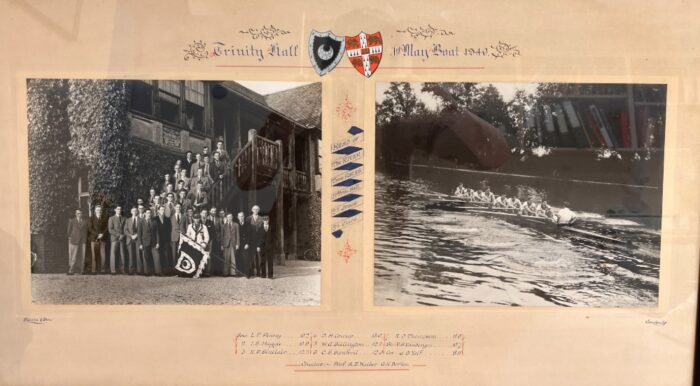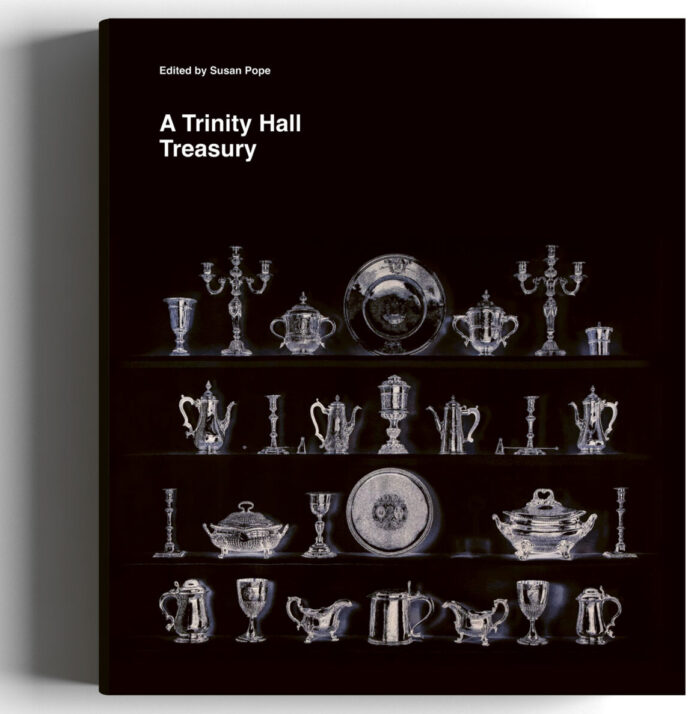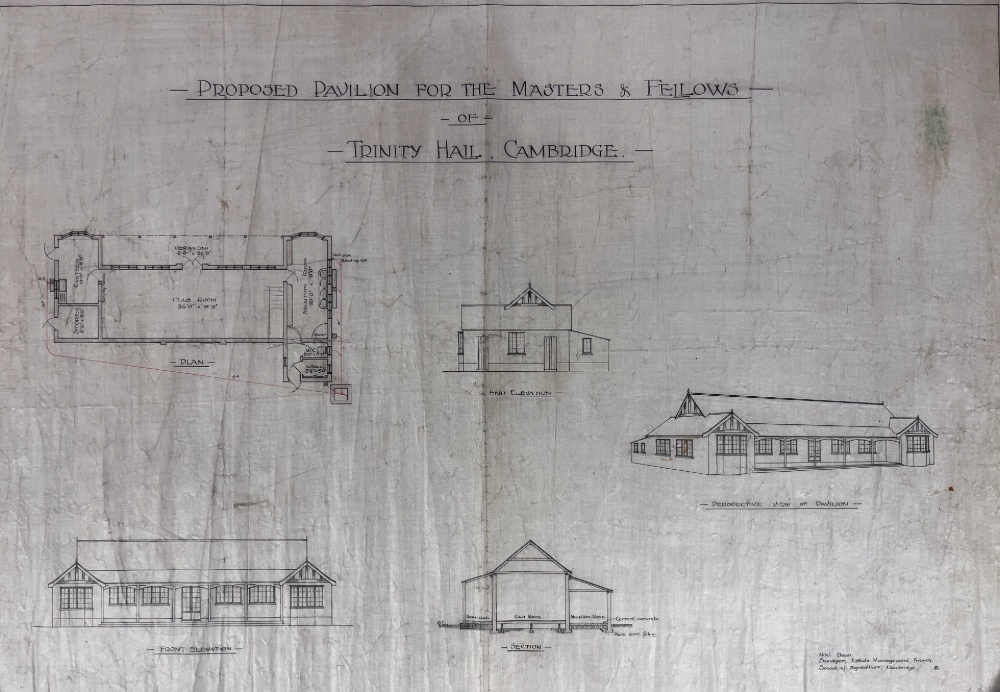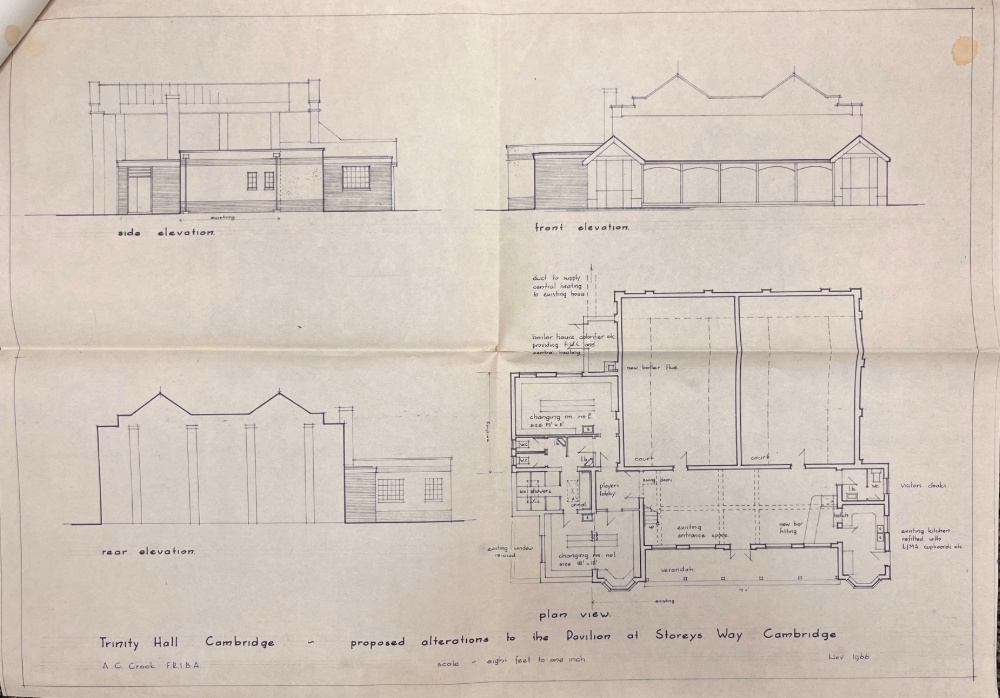This month, we are celebrating sports at Trinity Hall by exploring the construction of the Wychfield Sports Pavilion and unravelling the surprising tale of the “hastily convened” boat race of 1940.
Birthdays and boat races: A look into sport at Trinity Hall
Posted:
04 Jun 2025
100th Anniversary of the Sports Pavilion
In a way, the story of the Wychfield Sports Pavilion begins in 1674, when the College acquired seven acres of land off Huntington Road, although, it begins in earnest, in 1892, when the College began renting 10 acres of land off Madingley Road from St John’s College in order to create a playing field for the Cricket Club. In 1923, the College made the decision to purchase 7 acres of the land from St John’s and an additional 2 acres of adjoining land on Storey’s Way. The purchase was completed by June 1924, and construction on the new playing fields and sports pavilion began soon afterwards. By June 12th 1925, construction of the ground and pavilion was nearly complete. Excluding the purchase of the land, the building work cost £3,768 (£195,129 today). An additional £100 (£5,179) was given to the Groundsman, Ernest Coote, in recognition of his hard work in constructing the grounds.
The original pavilion appears to have only consisted of a club room, changing room, and serving room. In the 1930’s, the squash courts were added as well as a spectator’s gallery and shower block. By the 1960s it was in a state of disrepair. Major structural changes were made internally, and an extension was added. The extension included an additional changing room, a restroom for visitors, more showers, and better kitchen. It was remodelled one last time in the early 2000s by Freeland Rees Roberts, turning it into the Sports Pavilion we know today. The most significant additions this time being a new entrance and the gym extension.

"Hastily Convened": new insights into the May race of 1940
A rare Boat Club photograph from the 1940 May race was recently purchased by Fellow-Commoner Justin Davies and very kindly gifted to the College. This photo is unusual, because owing to the national emergency in 1940, the University made the decision to go down early and cancel the May Bumps. The Bumps were replaced with a “hastily convened” timed race. The THBC crews were strong in the 1930s and were consistently in the top three crews in the Mays. However, it wasn’t until this race in 1940 that the First Boat finally dislodged Jesus to come Head of the River.
Unlike WWI, Cambridge wasn’t totally emptied of undergraduates during WWII. There was a steady stream of students in the form of cadets taking 6-month courses, boys straight out of school too young to enlist, and medical and engineering students who were encouraged to finish their degrees. This allowed boat racing to continue throughout the War, although full Blues were not awarded, and Henley was paused. During this period, rowing flourished at Trinity Hall in part thanks to the wisdom of the coaches who realised rowing would appeal to the transient population if it was sold as an enjoyable form of exercise. Anyone willing to row was welcome into the club. In 1945, when the war ended, the transition back to the normal rowing calendar was smooth for Trinity Hall. Many oarsmen returned to the College to finish their studies or to coach. They continued their success and came Head of the River again in 1946.
This photo of the 1st May Boat of 1940 belonged to Vivian Alexander Vanbergen, who is in the stroke seat in the photo. The stroke seat is generally occupied by the strongest rower and is responsible for setting the pace of the boat. Vanbergen matriculated in 1939 to do the Mechanical Science Tripos in the hopes of going into Aeronautical Engineering. However, he was called up for military service and his studies were cut short. He joined the RAF on Nov 15th 1941 and was sent to the US for training at Marshall Airfield in Alabama. Fortunately, he survived the war, and he went on to briefly coach the THBC in 1958 when he returned to do an MA. He died at the very impressive age of 99, so perhaps rowing is good for one’s health!

Want to learn more about the history of Trinity Hall?
A Trinity Hall Treasury celebrates the College’s 675th Anniversary through its beautiful collection of photographs and stories. Students, staff and Fellows have written about some of their favourite treasures, exploring our history through our special objects and places.

